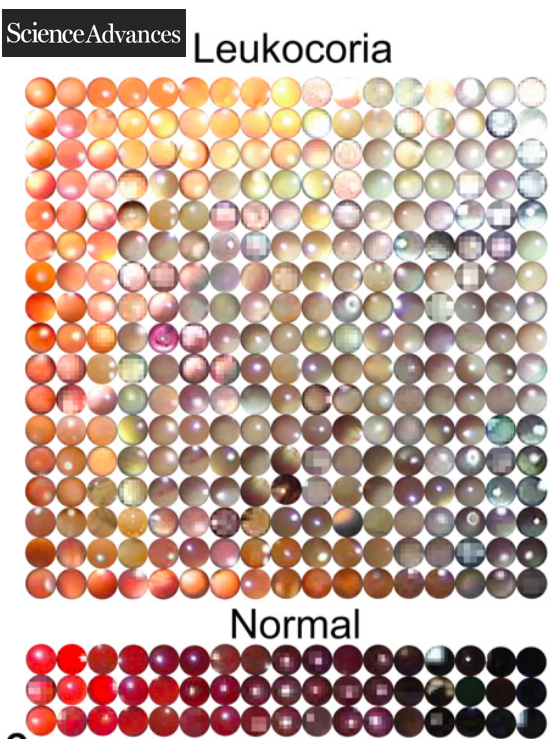https://advances.sciencemag.org/content/5/10/eaax6363
The “red reflex test” is used to screen children for leukocoria (“white eye”) in a standard pediatric examination, but is ineffective at detecting many eye disorders. Leukocoria also presents in casual photographs. The clinical utility of screening photographs for leukocoria is unreported. Here, a free smartphone application (CRADLE: ComputeR-Assisted Detector of LEukocoria) was engineered to detect photographic leukocoria and is available for download under the name “White Eye Detector.” This study determined the sensitivity, specificity, and accuracy of CRADLE by retrospectively analyzing 52,982 longitudinal photographs of children, collected by parents before enrollment in this study. The cohort included 20 children with retinoblastoma, Coats’ disease, cataract, amblyopia, or hyperopia and 20 control children. For 80% of children with eye disorders, the application detected leukocoria in photographs taken before diagnosis by 1.3 years (95% confidence interval, 0.4 to 2.3 years). The CRADLE application allows parents to augment clinical leukocoria screening with photography.
